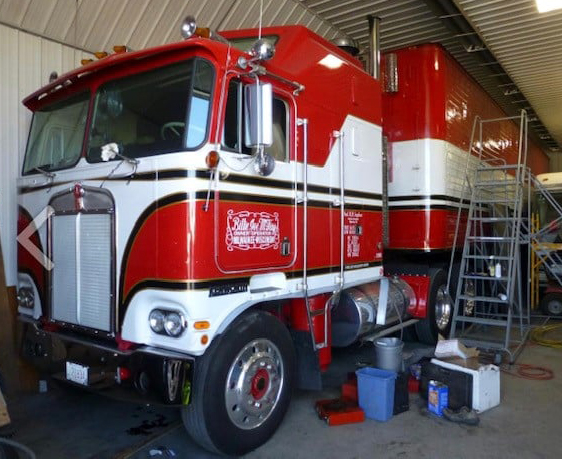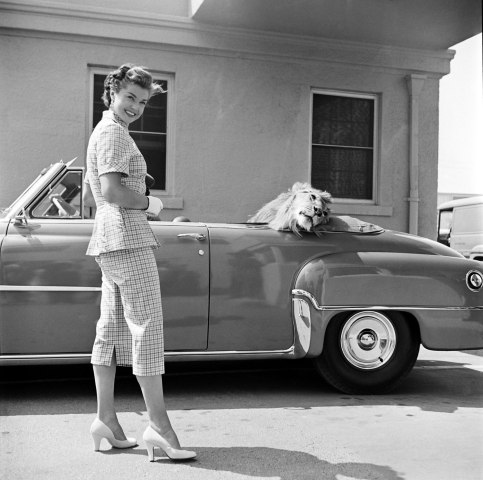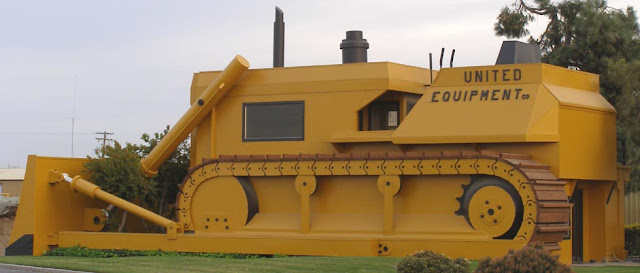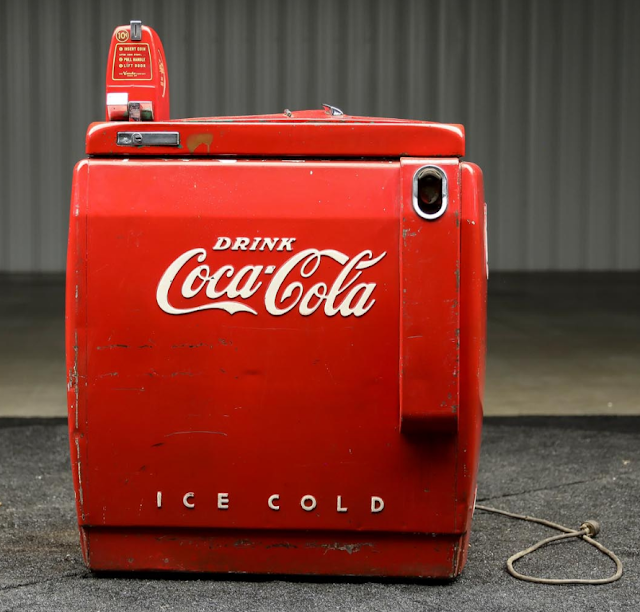Saturday, September 04, 2021
the Commercial Solvents Corporation plant in Peoria, Illinois made Nitro, Penicillin, dry ice, and gun powder
In World War I, the Allies needed a source of acetone, used to process naval gun propellants. At the time, acetone was a by-product of charcoal manufacture, which could not be easily expanded.
In 1916, Chaim Weizmann, later to be first president of Israel, then at the University of Manchester, invented a process to make acetone by fermentation of corn. The Allies soon set about implementing the process but realizing that corn supplies too were insufficient, chose to acquire and convert a former whiskey distillery in Terre Haute, IN, in the heart of the US corn belt (and near abundant coal supplies).
The new company undertook manufacture of acetone by fermentation and the sale of the co-products including ethanol, butanol, hydrogen, and carbon dioxide. Weizmann received royalties for his process for the first dozen years until an improved process using molasses fermentation was developed.
One of the first problems undertaken was a use for butanol, which had not been previously commercialized. In the early days unsaleable by-product butanol was collected in a large tank (the base of which later became a local swimming pool). Eventually derivative butyl acetate found use as a solvent for nitrocellulose lacquers in the then developing auto paint industry. Hence, a tradition evolved to research new uses for its by-products and their derivatives.
Another new product was synthetic methanol. The research was begun to find uses for co-product hydrogen. Natural gas fields in Louisiana provided synthesis gas as feed for the first synthetic methanol plant. Co-product carbon dioxide was sold as dry ice.
During the days of Prohibition, co-product ethanol was sold as laboratory grade alcohol, or was denatured and sold for solvent uses. In 1933, with the end of Prohibition, the company reentered the whiskey business. The bonded warehouses where bourbon was aged in charred oak barrels were again put to use.
Commercial Solvents was an early participant in the titanium dioxide pigment business. Titanium dioxide is now the white pigment of choice used in almost all applications including paints and plastics. It now has completely displaced white lead, which once was the preferred white pigment.
Later the company developed a process for the nitration of propane and produced nitroparaffin solvents and derivatives. During World War II, it adapted its skills in large scale fermentation to the manufacture of penicillin, but was forced out of that business when prices plummeted after the war. It invented zeranol, a semisynthetic growth promoter for beef cattle. It constructed two large ammonia plants in co-operation with International Minerals & Chemical Corporation, who acquired Commercial Solvents in 1975.
https://www.amazon.com/review/RILURJZV95H1G
It's president had a remarkable history, Theodore P. Walker, the president of the Commercial Solvents Corporation, after college had spent ten years in the Philippines with the constabulary, and while he was over in Europe during World War I he met his wife, a French Grand Opera Star.
http://indianadisasters.blogspot.com/2014/05/1940-terre-haute-explodes.html
I found a facebook page that is an amazing history of Hollywood/Burbank backlot movie and tv show info
this page is loaded with photos and info on the many shows and movies filmed in the same locations, and the comparisons of the same sets over years, is interesting. From the Back To The Future location being the same as the Gilmore Girls, and Hogans Heroes and Dukes of Hazard, etc
I trust that if I see a lion in a car, there's a good story. I haven't ever been disappointed
Had Esther Williams — a national-champion swimmer — been better at math, she would’ve gone to USC on an athletic scholarship. But a ‘D’ in high-school algebra compelled her to retake the course at a community college. While working part-time at a local department store, the athletic beauty caught the eye of a talent agent; she started her showbiz career in a dance-and-swim show called Aquacade, and ultimately went on to work for one of the biggest studios of 1940s Hollywood.
Under contract at MGM, Williams developed from a contract player (who was Mickey Rooney’s love interest in 1942’s Andy Hardy’s Double Life) to the star of grand and gaudy extravaganzas called “aqua-musicals.” It was in this role — as a graceful water nymph who could also adequately fill a bathing suit — that Williams became a box-office star. (It was work that required much more than splashing about in a pool: Williams ruptured her eardrum seven times, and after executing a 50-foot dive in 1952’s Million Dollar Mermaid, ended up in a cast for six months.)
Why is this a post about Esther? Because oddly, she has been a focus of several posts already without my ever coming across this photo
https://justacarguy.blogspot.com/2019/04/the-esther-williams-girls.html
and https://justacarguy.blogspot.com/2021/07/id-forgotten-that-id-already-come.html
Small-size JDM vehicles are being targeted for deregistering by DMVs in Maine and Rhode Island
Rhode Island has no state laws restricting the use of kei-class vehicles on public roads, and the only rule RI states for justification is that “They do not meet Federal Motor Vehicle Safety Standards”—a moot point since they were imported under the 25-year law, which states, “A motor vehicle that is at least 25 years old can be lawfully imported into the U.S. without regard to whether it complies with all applicable FMVSS.”
Friday, September 03, 2021
the crash focused art of Alfred Molino
https://diaboliquemagazine.com/crash-and-fall-the-perilous-art-of-walter-molino/
RM Sothebys is auctioning off a truck, that on paper, makes no sense that it's a big attraction, is a 1986 Toyota Xtracab with about 160,000 miles. But to see it, is to believe that there is a huge profit in store for it's owner
a 1959 hard-top convertible Corvette has been in impound for 4 years, losing value from sun, rain, not getting washed, and costing the owner 30k in legal fees, all because the restorers used the wrong rivets
This owner bought this restored Corvette at an Illinois dealership, took it home to Kansas, went to get it registered, and the car was immediately found to be illegal, because the restorers used ordinary rivets. That's legal, where the car was restored.
But not legal to exist in Kansas
“What happened is they took it off to restore it, said Martiniz. “When they put it back on, they used modern bit rivets instead of old. You can buy the old rivets to put them back on but they didn't. They just used modern rivets and put it back on.”
The VIN number on the engine was no help. It wasn’t a match because the original engine in the 62-year-old car had been replaced.
Over the years of neglect, the car has sustained considerable damage. An expert who looked at the car estimates $28,000-$38,000 in damages. Martinez has spent about $30,000 in legal fees. It appears there is no simple solution.
There was a hearing in July, but the Johnson County judge presiding over the case asked the Kansas State Attorney General to weigh in before he issues his ruling. The Kansas Justice Institute has filed its own brief in the case, arguing the government should not be allowed to destroy Martinez’ car for an act he did not commit, where no crime was committed and the car was never stolen.
But, weeks after the hearing, the Attorney General has decided he will not get involved in the case.
So the issue isn't settles, and the car remains in impound
Thursday, September 02, 2021
Rolf's street legal Curtis OX5 powered Frazer Nash is now finished!
thanks Rolf!
beautiful 1912 Stanley
https://rmsothebys.com/en/auctions/HF21/Hershey/lots/r0056-1912-Stanley-30hp-Roadster/1164820
a bird built for only $8,500 in parts, as all the labor was in house
"After meeting up with the guys at TredWear and seeing the Scraptona, we knew we needed a ratty wing car," Shawn said. "Then I remembered my dad had the roof of an old Road Runner and a pile of parts. After sharing my idea with him, he agreed to give us the parts.
The nose and wing are fiberglass replicas from eBay, an old NASCAR Cup car chassis, from a Toyota team, cost $1,600," Shawn continued. "I added some used NASCAR brakes for $300 along with a fuel system.
The goal was to build the world's most affordable Superbird. "Fast and cheap" was the mantra, so the ride has a real minimalistic race car vibe going on. It's actually titled as a 1970 Road Runner.
https://www.motortrend.com/features/1970-road-runner-rat-rod-superbird
David Silberkleit, the Bugeye Guy, works on other cars, his company is expert in Sprite restoration
Larrick of Mount Vernon, Wash., were recently at the Bugeye Guy restoration shop in Branford, Conn., taking delivery of their pale yellow 1958 Sprite, Silberkleit, the aforementioned Bugeye Guy, had made roughly 150 nonoriginal modifications meant to keep Ducky rolling toward Washington, including a Ford-sourced five-speed gearbox for more relaxed cruising, disc brakes all around, electronic ignition, an alternator and — crucially — a beefy aluminum radiator with six-bladed fan.
Some collector of toys and go carts, petroliana and juke boxes - has passed on and left his collection to be auctioned off... lots of cool stuff!
Denny Kannenberg had a motorcycle racing career which ran from 1956 to 1973, when he retired to devote his full-time attention to his Sport Wheels business in Minnesota
If I were a rich guy, I'd buy so much of this stuff, set up a store both brick and online, and just enjoy swapping, trading, buying and selling stuff like this
Some collector of toys and go carts, petroliana and juke boxes - has passed on and left his collection to be auctioned off... lots of cool stuff! Like this junkyard built go-cart with a Sears/Tecumseh engine, Cushman friction clutch, Indian motorcycle drum brakes, a late 1940’s Packard grille and early 1950’s Chevrolet side trim, vintage tires and steering wheel.
Wednesday, September 01, 2021
Brazil bank robbers tied hostages to the hood and roof of their getaway car to prevent cops from shooting them, and the robbers used drones to monitor the movements of the police from the air.
A gang of heavily armed men attacked three banks in the centre of Araçatuba in the early hours of Monday local time.
After the robbery, the gang took a number of hostages and surrounded the local military police station. Gang members also blocked key access roads into the city by setting cars alight, local media reported.
A 25-year old cyclist was seriously injured when one of the explosive devices planted by the gang went off as he cycled past.
The police said there were still at least 14 bombs across the city and that the first indication was that they had some sort of sensor, which is triggered either by heat or motion.
Schools will remain closed on Monday and residents have been urged to stay indoors until all the devices have been dismantled.


















































